American elm (Ulmus americana)
slippery (red) elm (Ulmus rubra)
Ulmaceae, the elm family
How to recognize elms. Elms have leaves that are alternately arranged, simple in complexity, and are doubly serrate, meaning that the leaf margins have both small teeth and large teeth. (The teeth have teeth, basically).
American elm, shown below, has moderate-sized leaves that are smooth or slightly rough-textured above, although not quite as scratchy as the leaves of slippery elm (Ulmus rubra).
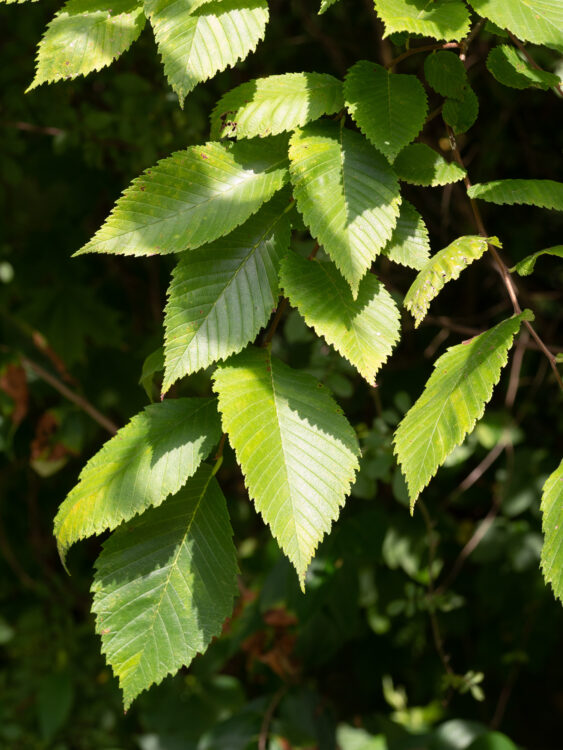
American elm leaves are simple, ovate, and twice-serrate.
Compared with slippery elm, they are smaller and smoother-surfaced.
Slippery elm leaves are generally larger than those of American elm, and very rough above.
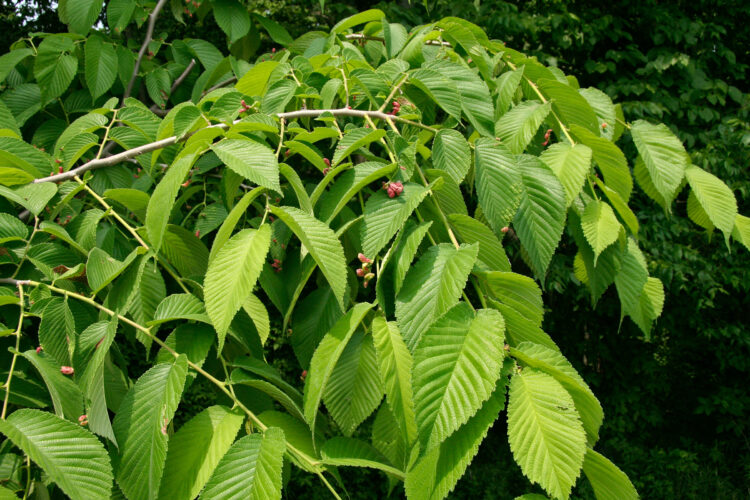
Slippery elm leaves are large and rough-surfaced.
The shape of open-grown elms is distinctive. It has been described as “a wine glass, a feather duster, or a colonial lady upside-down.” This is an American elm.

American elm in Marion County Ohio. July 3, 2008.
This is slippery elm.
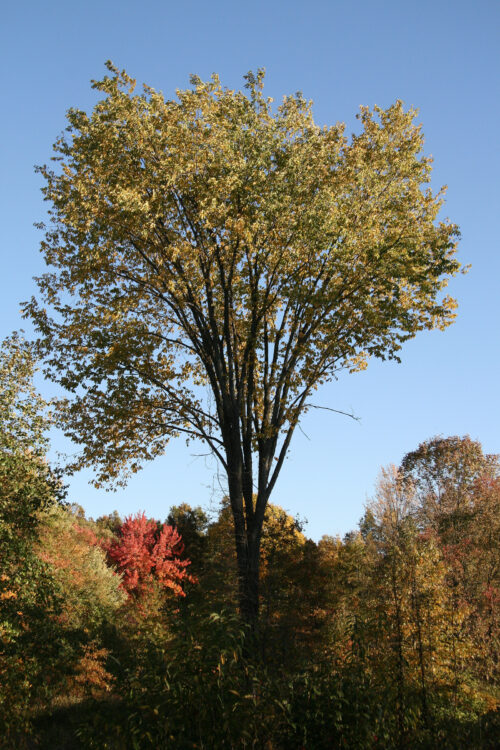
Slippery elm in Summit County.
October 20, 2007
Flowers and fruits. The flowers of elm are perfect (i.e., having both stamens and a pistil) but are “incomplete” in that they are missing something. In this case, as befits a wind-pollinated plant, there are no petals. The ones shown here are American elm.
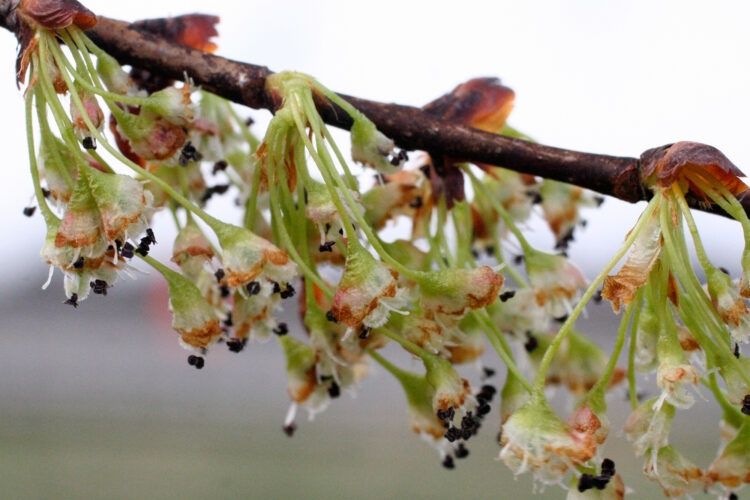
American elm flowers on March 27, 2007.
Note the Y-shaped pollen-receptive stigma lobes,
and the purple pollen-bearing stamens.
The fruits are coin-shaped samaras–single-seeded and winged for wind dispersal. Differences in the fruits offer the clearest way to distinguish the elms as American elm samaras are hairy-edged, while those of slippery elms are not.

American elm fruits. May 9, 2005.
Slippery elm fruits have hairless margins.
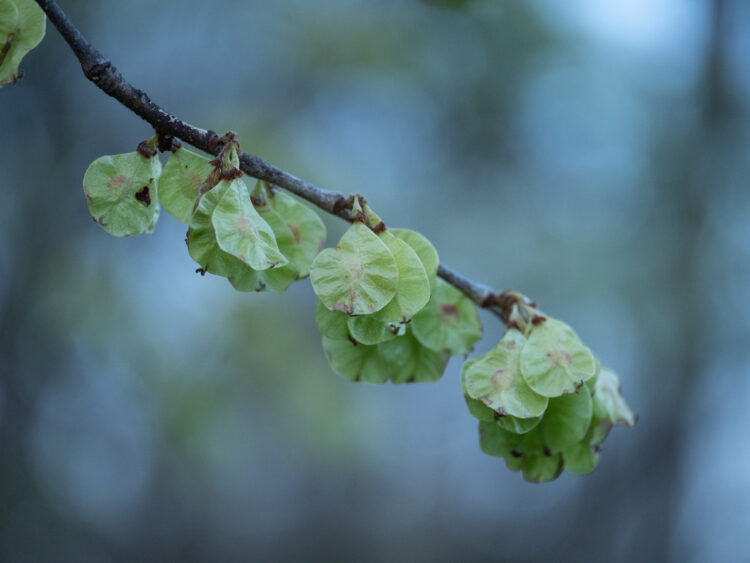
Slippery elm fruits. April 26, 2023.
Bark. American elm bark is deeply fissured, soft, light-colored.

American elm bark.
Slippery elm bark is hard, dark, and shallowly fissured.
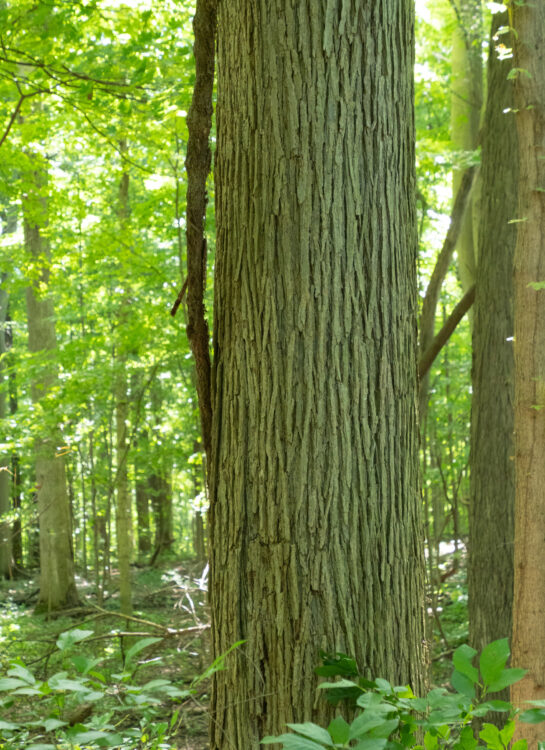
Slippery elm
American elm can be distinguished from slippery elm by snapping off a little piece of bark and observing the cross-section. It is chocolate-vanilla-chocolate-vanilla (alternating light and dark bands) whereas in slippery elm it’s chocolate-chocolate-chocolate-chocolate (two slightly different shades of brown).
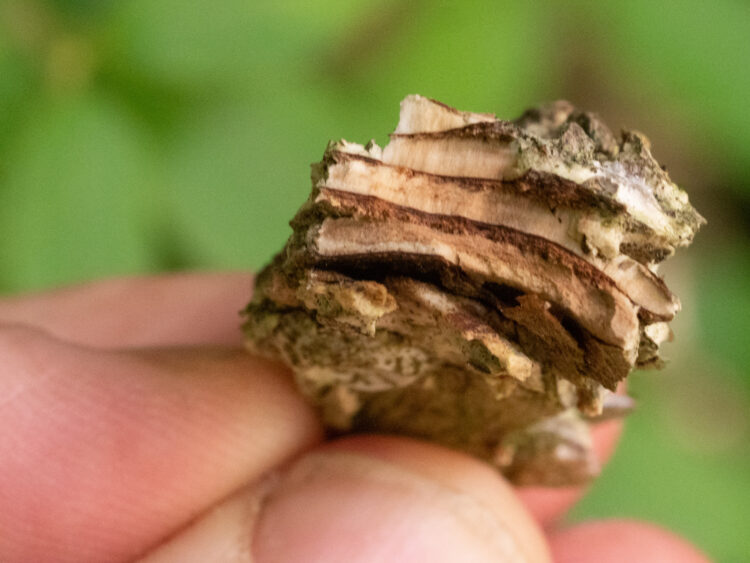
American elm bark cross-section shows alternating dark and light layers.
See below, slippery elm, dark alternating with dark.
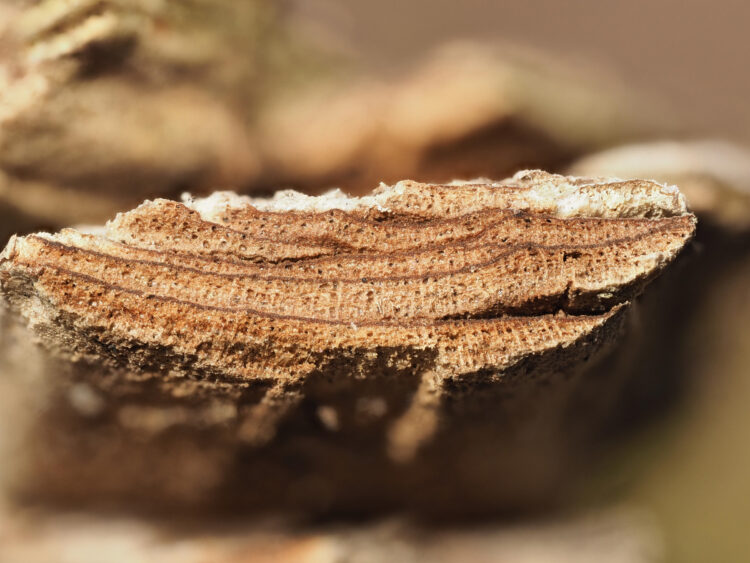
Hark, slippery elm bark is dark, dark dark!
In the winter. Elm twigs have winter buds directed to one side of the twig. The leaf scars are oval, with about six well-defined bundle scars. The twigs of slippery elm are especially rough, and the bud scales are hairy as well. Those of American elm are hairles or only finely hairy.

Elm twigs: slippery on the left; American in the right.
Where to find American elm. E. Lucy Braun, in The Woody Plants of Ohio (1961, 1989; The Ohio State University Press) tells us that American elm is “Found in a variety of sites: frequent on alluvial bottomlands and along ravines, and sometimes a constituent of mesic woodlands northward. Often an early invader of cleared land and slumped banks, but not usually persisting on dry sites. Attacked by the Dutch elm disease and phloem necrosis which have killed large numbers of trees”.
Where to find slippery elm. E. Lucy Braun, in The Woody Plants of Ohio (1961, 1989; The Ohio State University Press) tells us that slippery elm is “Ranging through most of the Deciduous Forest, in well-drained mesic sites and rocky (calcareous) hillsides. Well distributed in Ohio, usually ocurring as scattered individuals. The wood is dark brown or red, the inner bark fragrant and mucilaginous, characters which gave given rise to the commoin names. Easily recognized by the rusty winter buds and very rough twigs and leaves”.
Scanned Drawing from an Old Book
Flora of West Virginia, by P.D. Strausbaugh and E.L. Core

Slippery elm on left; American elm on the right.
Oooh ooh. I have a question!
What is that centipede-like pattern on the bark-free dead elm trunk, and how is it significant?
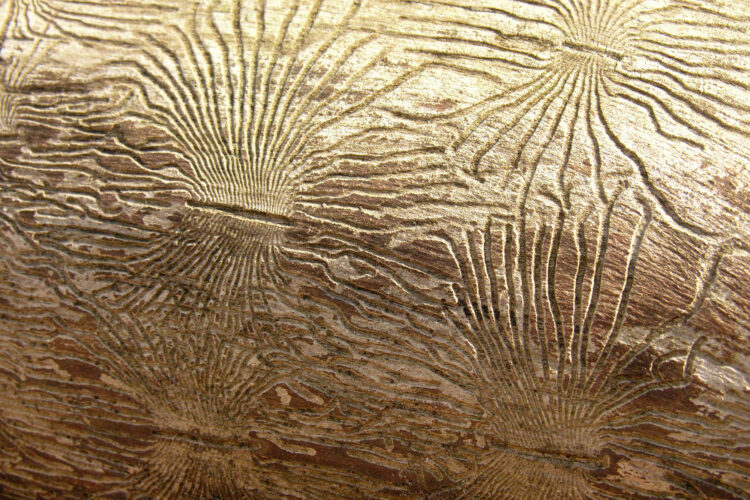
This doesn’t look good.
These are galleries of an elm bark beetle. The larger central channel was made by the egg-laying female, and the numerous smaller side channels were made by her offspring that eventually emerged. The beetles spread an introduced vascular tissue-blocking fungus that causes a lethal condition known as Dutch elm disease.
